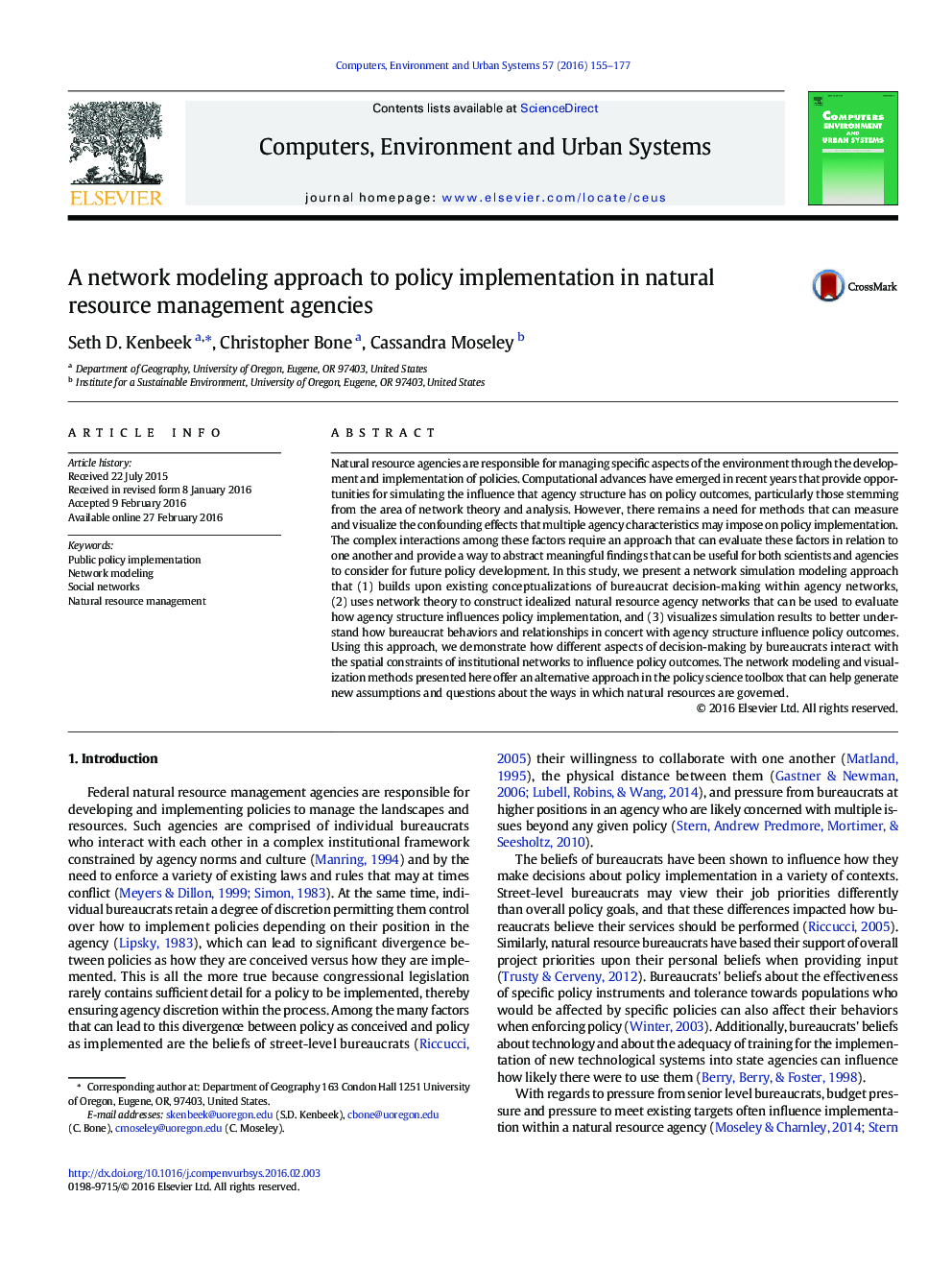| Article ID | Journal | Published Year | Pages | File Type |
|---|---|---|---|---|
| 6921908 | Computers, Environment and Urban Systems | 2016 | 23 Pages |
Abstract
Natural resource agencies are responsible for managing specific aspects of the environment through the development and implementation of policies. Computational advances have emerged in recent years that provide opportunities for simulating the influence that agency structure has on policy outcomes, particularly those stemming from the area of network theory and analysis. However, there remains a need for methods that can measure and visualize the confounding effects that multiple agency characteristics may impose on policy implementation. The complex interactions among these factors require an approach that can evaluate these factors in relation to one another and provide a way to abstract meaningful findings that can be useful for both scientists and agencies to consider for future policy development. In this study, we present a network simulation modeling approach that (1) builds upon existing conceptualizations of bureaucrat decision-making within agency networks, (2) uses network theory to construct idealized natural resource agency networks that can be used to evaluate how agency structure influences policy implementation, and (3) visualizes simulation results to better understand how bureaucrat behaviors and relationships in concert with agency structure influence policy outcomes. Using this approach, we demonstrate how different aspects of decision-making by bureaucrats interact with the spatial constraints of institutional networks to influence policy outcomes. The network modeling and visualization methods presented here offer an alternative approach in the policy science toolbox that can help generate new assumptions and questions about the ways in which natural resources are governed.
Related Topics
Physical Sciences and Engineering
Computer Science
Computer Science Applications
Authors
Seth D. Kenbeek, Christopher Bone, Cassandra Moseley,
